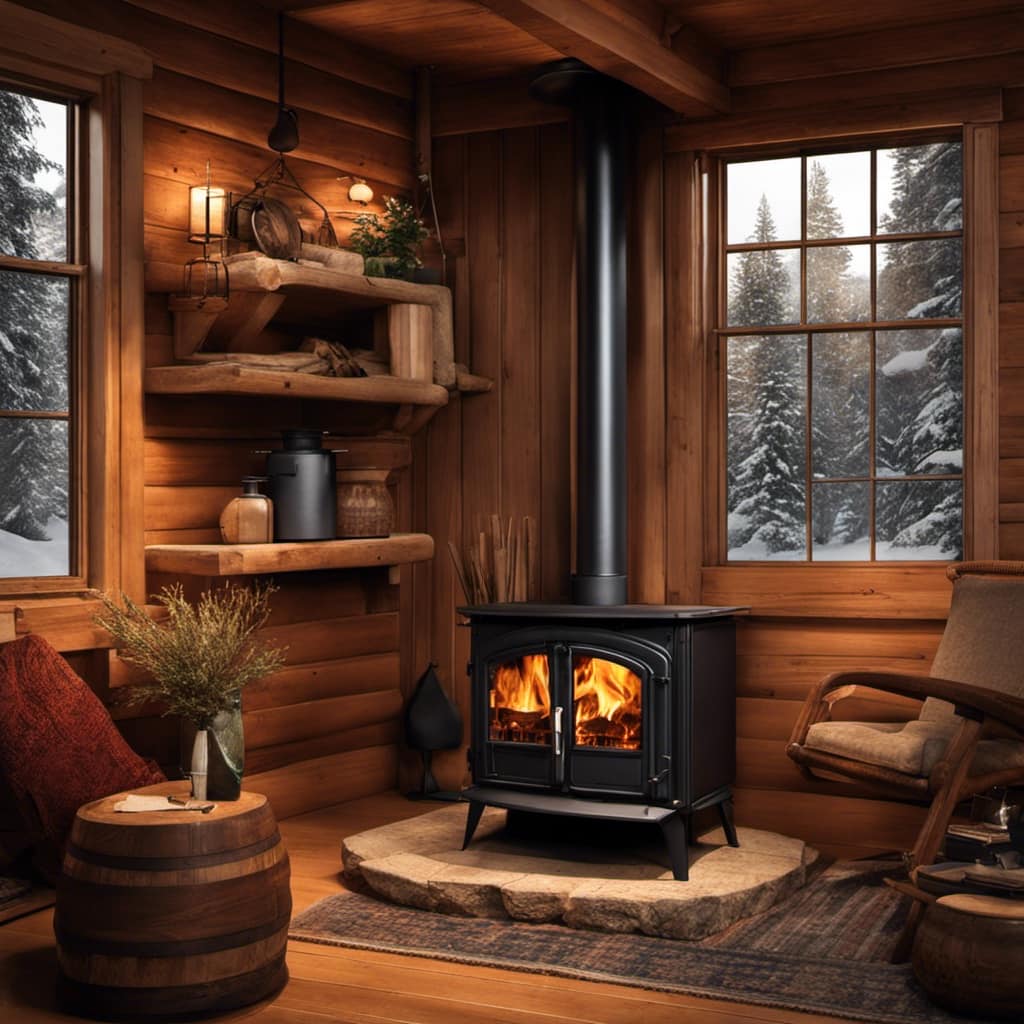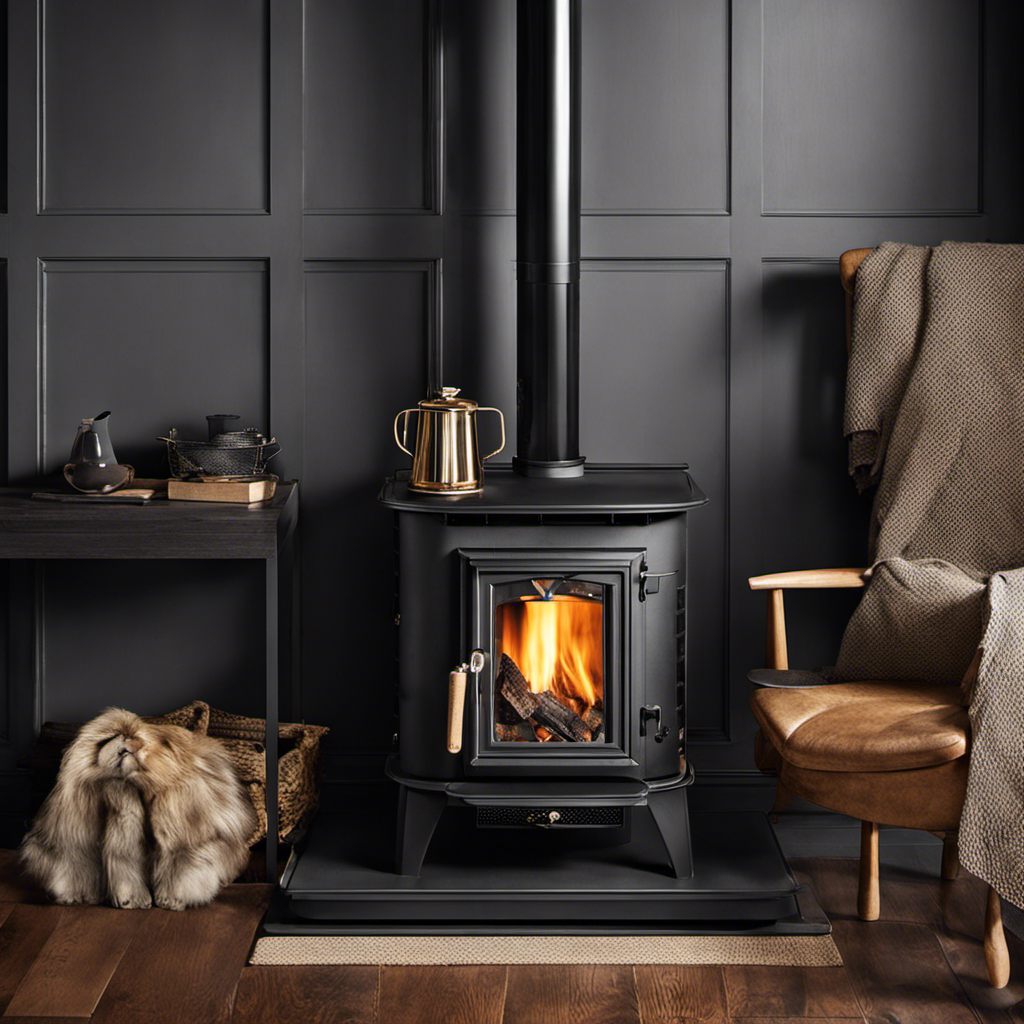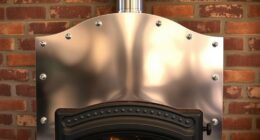The idea of building a rocket wood stove on my own has always fascinated me. The prospect of harnessing the power of flame for effective home heating is both thrilling and sensible.
In this article, I will guide you through the detailed steps of building your own rocket wood stove. We will start by gathering the materials needed for the project. It’s important to have all the necessary components before getting started.
Once we have all the materials, we will move on to designing the stove. This step involves deciding on the size and shape of the stove, as well as considering any specific features or modifications you may want to incorporate.
Next, we will begin constructing the firebox and insulation. This is a crucial part of the process, as it determines the stove’s efficiency and safety. It’s important to carefully follow the instructions and ensure proper insulation to prevent heat loss.
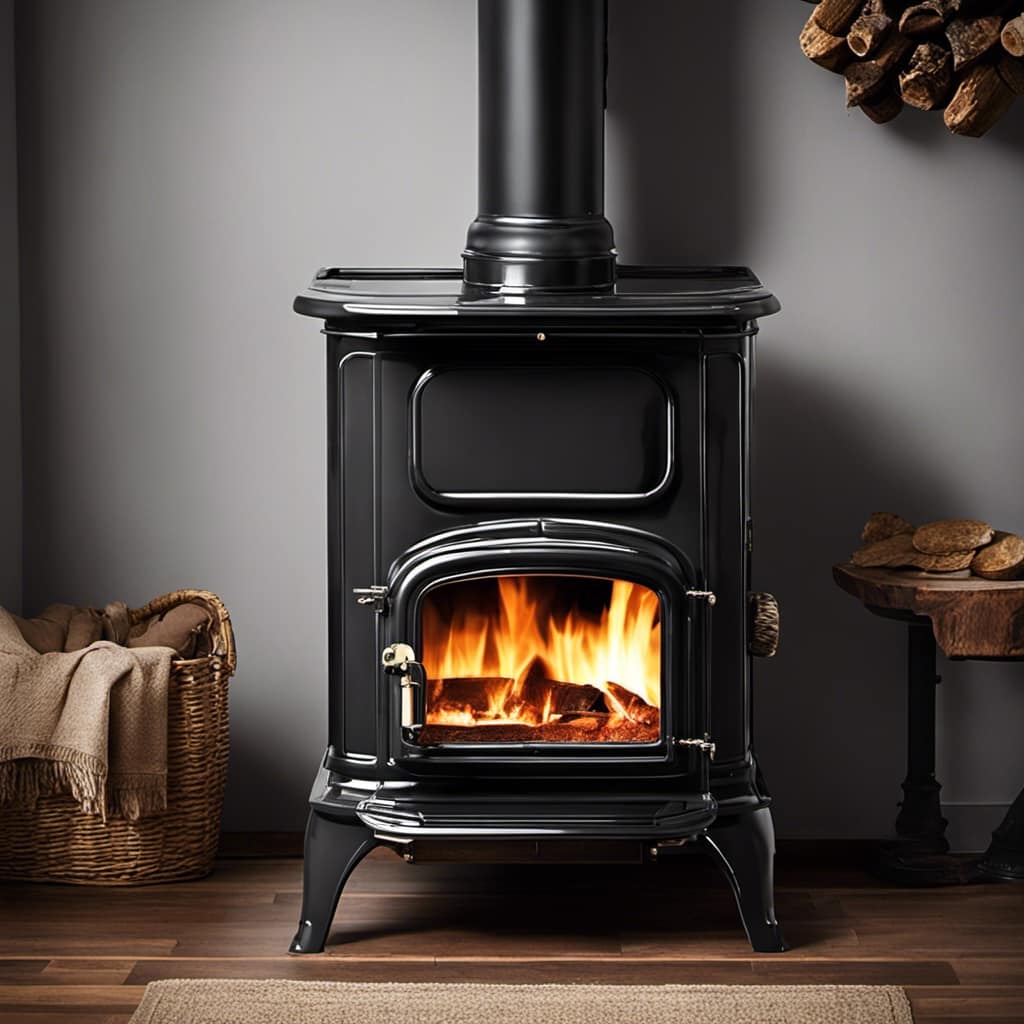
After completing the firebox and insulation, we will move on to building the chimney and secondary air intake. These components play a vital role in the stove’s performance, allowing for efficient combustion and proper ventilation.
Finally, we will test and use our newly constructed rocket wood stove. This step involves lighting the stove for the first time and making any necessary adjustments to ensure optimal performance. We will also discuss proper maintenance and safety precautions for long-term use.
Let’s embark on this exciting journey together and build our own rocket wood stove. By following these step-by-step instructions, you’ll be able to enjoy the benefits of a homemade, efficient heating solution in no time.
Key Takeaways
- Utilize measuring tape, circular saw, drill, and level for gathering materials and tools
- Design the rocket stove with a larger combustion chamber, insulation, secondary air intake, and tapered chimney
- Construct the firebox and insulation using refractory bricks and high-temperature materials
- Build the chimney and secondary air intake with a damper, unobstructed airflow, durable metal, and proper insulation
- Test and use the rocket wood stove for efficient and sustainable heating, minimal fuel consumption, high heat production, and portability.
Gathering Materials and Tools
Sourcing materials and choosing the right tools are crucial steps in building a rocket wood stove. To start, I’ll need a measuring tape to determine the dimensions of the stove. A circular saw will be necessary for cutting the metal sheets and pipes. A drill with various drill bits will come in handy for creating holes and attaching the components. Additionally, a level will ensure that the stove is straight and stable. For safety, I’ll need gloves to protect my hands and safety goggles to shield my eyes.
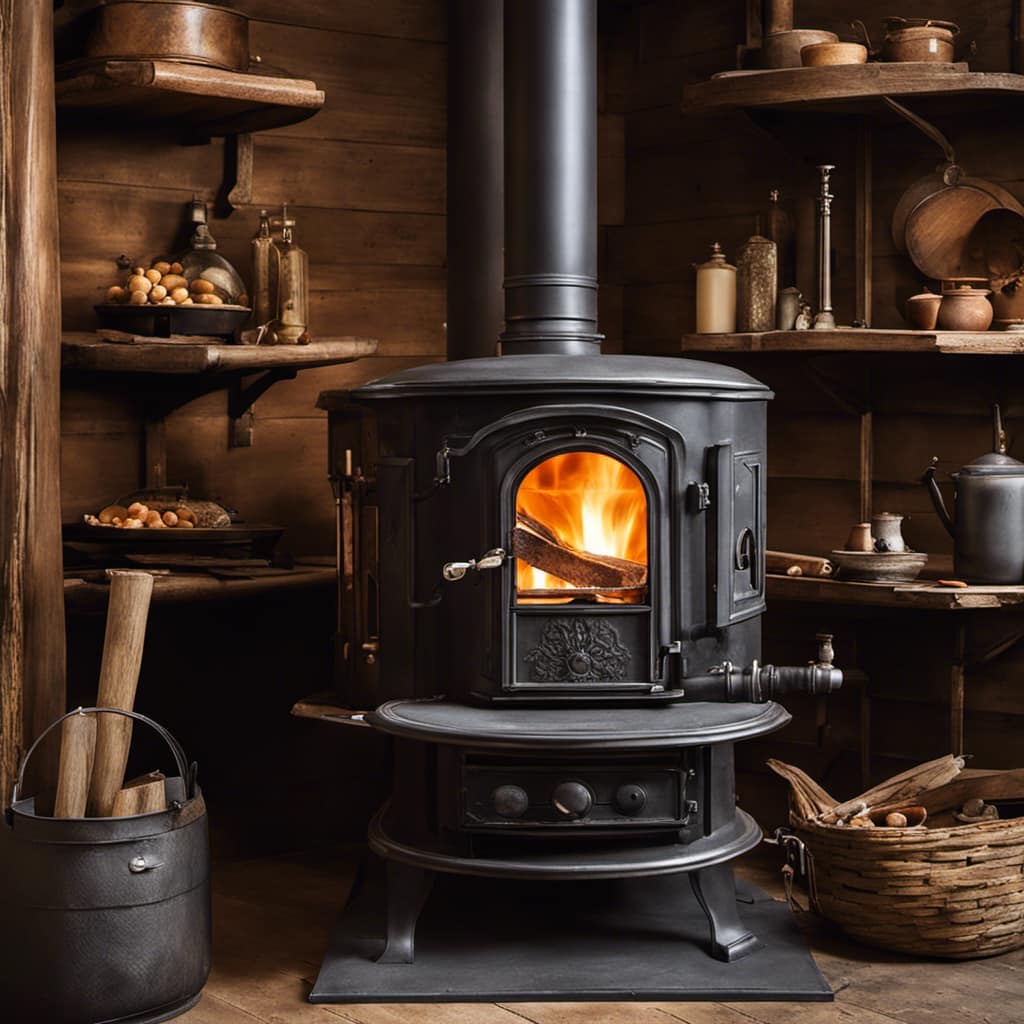
Once I’ve the necessary tools, I can move on to designing the rocket stove, where I’ll determine the specific dimensions and layout of the stove.
Designing the Rocket Stove
I’m sketching out different designs for the rocket stove, considering the dimensions and layout that will maximize efficiency and heat output. To achieve this, I’m focusing on the following aspects:
- Increasing the size of the combustion chamber to allow for better airflow and more complete combustion.
- Adding insulation around the combustion chamber to retain heat and improve overall efficiency.
- Incorporating a secondary air intake system to enhance airflow and promote cleaner burning.
- Designing a tapered chimney to create a stronger draft and increase the stove’s ability to draw in air.
- Implementing a heat exchanger system to capture and utilize waste heat.
By carefully considering these design elements, I aim to create a rocket stove that not only burns fuel efficiently but also provides optimal heat output.
Once the design is finalized, I’ll move on to constructing the firebox and insulation, ensuring that every component works in harmony to maximize performance.
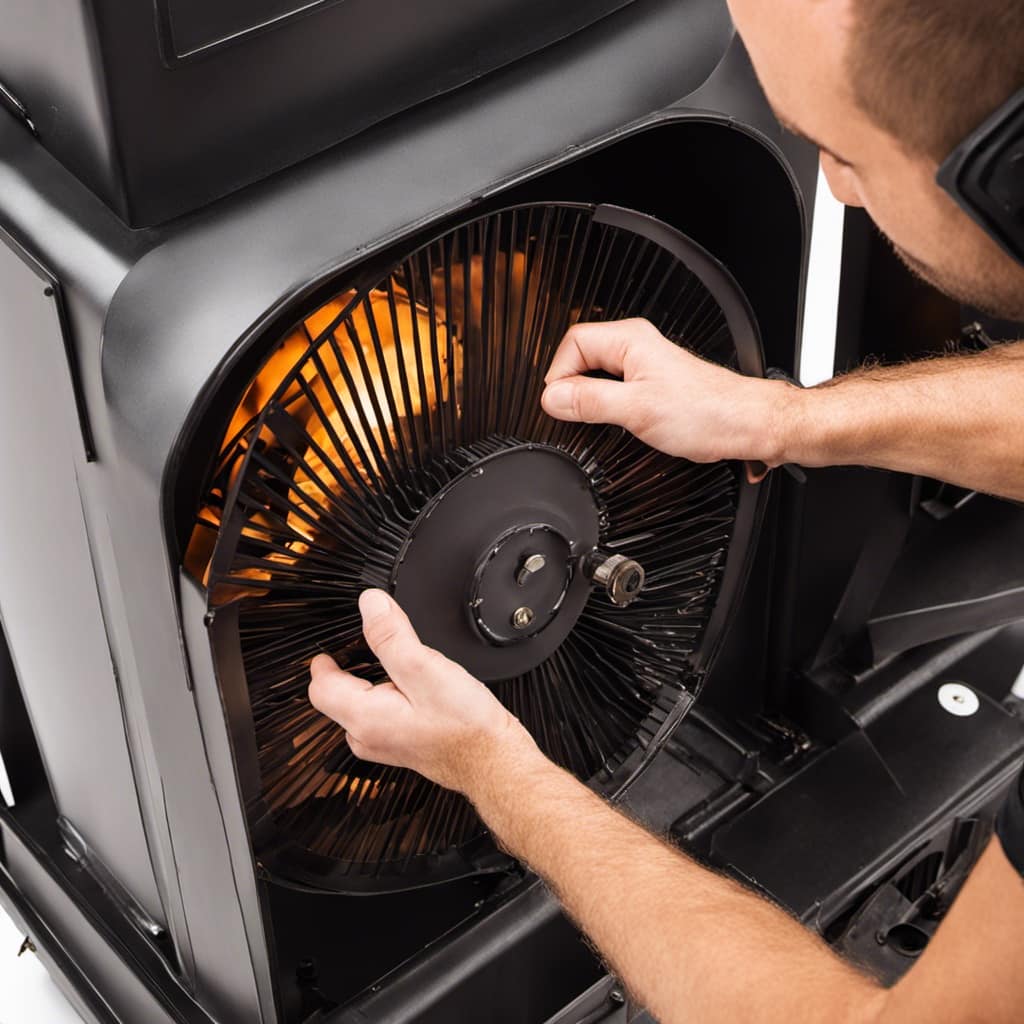
Constructing the Firebox and Insulation
To construct the firebox and insulation, I’ll use refractory bricks and high-temperature insulation materials.
The firebox design is crucial for the efficient and safe operation of a rocket wood stove. It needs to be sturdy, able to withstand high temperatures, and provide proper airflow for combustion. Refractory bricks are ideal for this purpose as they’re specifically designed to withstand extreme heat.
They’ve excellent thermal conductivity, ensuring that the heat generated by the fire is efficiently transferred to the surrounding space. Additionally, high-temperature insulation materials are necessary to prevent heat loss and maintain a high combustion temperature.
These materials, such as ceramic fiber blankets or vermiculite boards, create a barrier that traps the heat inside the firebox, improving the stove’s efficiency.

Can the Rocket Wood Stove also be converted into a Gasifier Wood Stove?
Yes, the Rocket Wood Stove can be easily converted into a Gasifier Wood Stove with the help of a detailed gasifier wood stove tutorial. This tutorial provides step-by-step instructions on how to modify the Rocket Wood Stove to improve its efficiency and reduce smoke emissions.
Building the Chimney and Secondary Air Intake
I’ll use a metal chimney and install a secondary air intake to improve the airflow and combustion efficiency of the rocket wood stove. Here’s how I plan to do it:
Installing the damper: A damper is essential for controlling the airflow and regulating the heat output of the stove. By installing a damper in the chimney, I can easily adjust the amount of air entering the stove, ensuring optimal combustion.
Maintaining the secondary air flow: The secondary air intake is crucial for promoting complete combustion and reducing smoke emissions. I’ll ensure that the secondary air intake is unobstructed and properly positioned to provide a steady flow of oxygen to the fire.
Choosing a metal chimney: A metal chimney is durable, resistant to high temperatures, and easy to install. It will efficiently channel the smoke and gases out of the stove, preventing any build-up that could hinder the stove’s performance.

Proper insulation: Insulating the chimney will help maintain high temperatures and improve the overall efficiency of the stove. I’ll use suitable insulation materials to ensure minimal heat loss.
Regular maintenance: To ensure the chimney and secondary air intake are functioning optimally, regular cleaning and inspection are necessary. I’ll schedule routine maintenance to remove any creosote build-up and check for any potential issues.
Testing and Using Your Rocket Wood Stove
Using the rocket wood stove for cooking and heating has been a game-changer in terms of efficiency and sustainability. This innovative stove design utilizes alternative fuels such as wood pellets, twigs, and small branches, making it an eco-friendly option for those looking to reduce their carbon footprint.
The advantages of rocket stoves are numerous. Firstly, they’re incredibly efficient, requiring minimal fuel to produce a high amount of heat. This means less time and effort spent gathering and chopping wood.
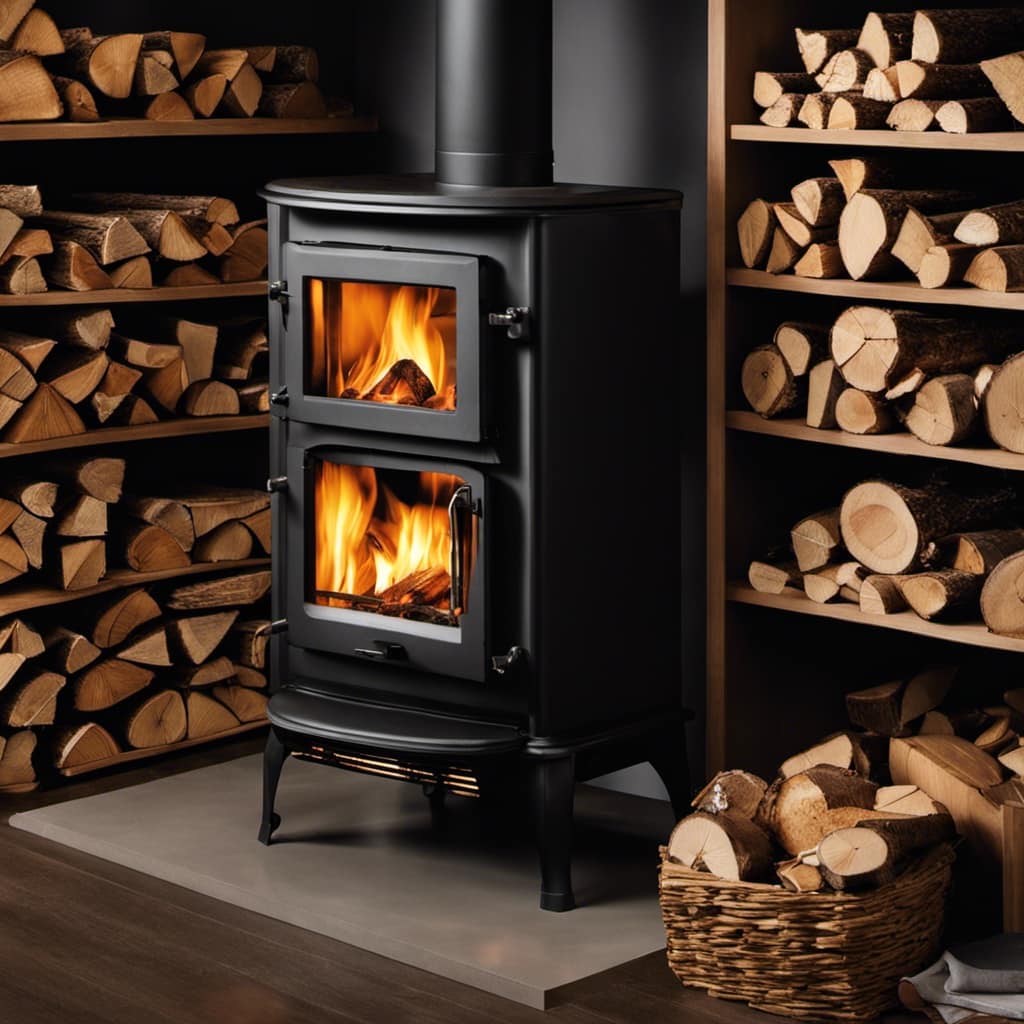
Secondly, rocket stoves have a unique combustion system that maximizes heat transfer and minimizes smoke production, resulting in cleaner air and less pollution.
Lastly, their compact size and portability make them ideal for outdoor activities such as camping or emergency situations.
Conclusion
In conclusion, building a rocket wood stove is a rewarding project that can provide efficient and eco-friendly heating.
By gathering the right materials and tools, designing the stove carefully, and constructing each component with precision, you can create a stove that will effectively burn wood and provide warmth.
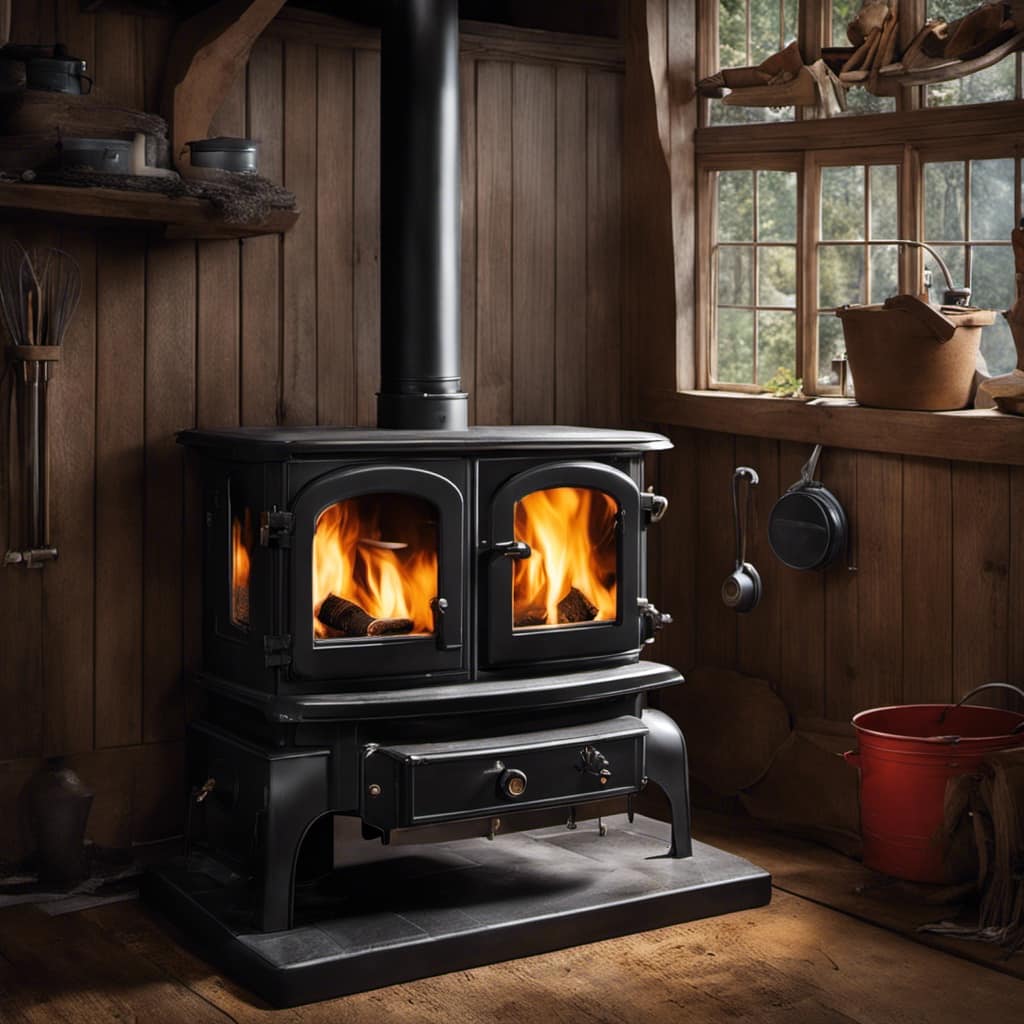
Remember to test and use your stove safely, following all necessary precautions.
So, why wait? Embark on this DIY adventure and enjoy the benefits of a rocket wood stove today!
Growing up surrounded by the vast beauty of nature, Sierra was always drawn to the call of the wild. While others sought the comfort of the familiar, she ventured out, embracing the unpredictable and finding stories in the heartbeat of nature.
At the epicenter of every remarkable venture lies a dynamic team—a fusion of diverse talents, visions, and passions. The essence of Best Small Wood Stoves is crafted and refined by such a trio: Sierra, Logan, and Terra. Their collective expertise has transformed the platform into a leading authority on small wood stoves, radiating warmth and knowledge in equal measure.

